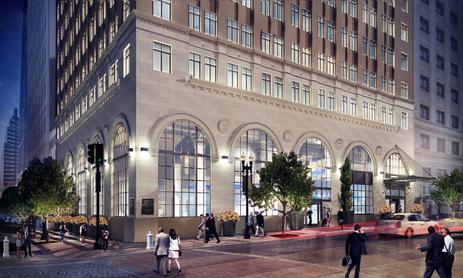
Barnett Tower is a symbol of both the old days and the future for Jacksonville, FL. The former headquarters of the largest bank in Florida sat vacant for decades, but now is part of a renovation funded partly by equity from New Markets Tax Credits (NMTCs) and Historic Tax Credits (HTCs). The mixed-use property–with residential, commercial and educational space–will host its first tenants by the end of the year.
Once finished, Barnett Tower will have 46,166 square feet of commercial and office space on the first seven floors and 108 multifamily apartments–22 designated as affordable–on floors 8-18.
“I feel personally privileged to do work on these buildings,” said Steve Atkins, principal and managing director of SouthEast Group, which is partnering with The Molasky Group of Companies as developer. “When these get done, they will really be trophy projects.”
While Barnett Tower is under construction, SouthEast Group is also renovating the across-the-street Laura Street Trio buildings into a boutique hotel with retail space–also using NMTCs and HTCs.
History
The Barnett National Bank Building, built in 1926 as the bank’s headquarters, was the tallest building in Jacksonville until 1954. “[Barnett National] was the biggest bank in Florida for years,” Atkins said. “There are so many people who worked in the building and are still in the community. They have such great memories of it.” In 1993, the bank moved into a new building and Barnett Tower became home to a decreasing number of tenants before it fell into disrepair and was largely abandoned, similar to the Laura Street Trio (built in 1902, 1908 and 1911). Those buildings were formerly known as the Marble Bank Building, Bisbee Building and Florida Life Building. “My interest began about 13 years ago,” Atkins said. “I was a developer in Jacksonville and our portfolio was in the southeastern United States. I am interested in historic properties and adaptive reuse. I’m from Jacksonville, so I wanted to see what kind of role I could play.” Eight years ago, Atkins looked at the bank-owned properties. A previous owner planned to make them high-end condominiums, but that deal fell apart during the Great Recession. There was then interest in converting the buildings to offices, but nothing happened. “What was obvious was that mixed-use was the best use,” Atkins said. “But doing adaptive reuse and mixed-use is complicated.” The deal came together–with tax credits playing a significant role.
Read the full article here.